BOARD OF DIRECTORS
Board of Directors takes its name from Napoleon Hill’s idea of convening an inner circle of advisors — real or imagined — to guide one’s growth. In my practice, this translates into an ongoing dialogue with the artists, thinkers, and cultural forces whose work I encounter. Each photograph or series emerges not in isolation, but in conversation with what I have seen, read, felt, and lived. The camera becomes the site where these influences converge, and the photograph carries traces of that dialogue. This section makes those connections visible, pairing my work with the inspirations that continue to shape it.
Alberto Giacometti
October 10, 1901, – January 11, 1966
-
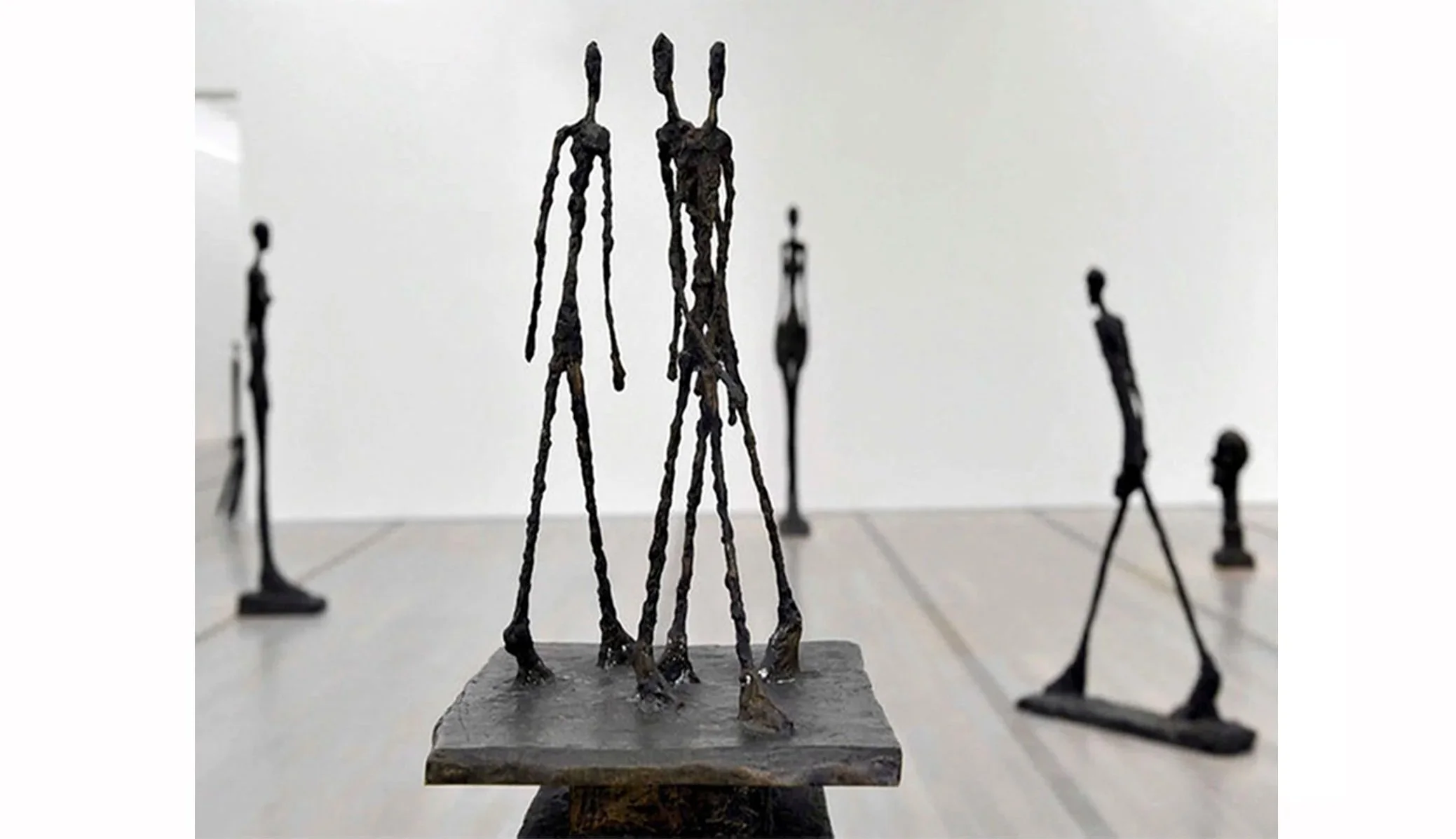
Three Men Walking II, 1949
Giacometti’s attenuated figures embody both fragility and resilience—forms stretched toward infinity yet anchored in the ground. Their elongated proportions capture the paradox of presence and absence, movement and stasis.
-

1111 LR_030812_209
When I first photographed 1111 Lincoln Road by Herzog & de Meuron, I couldn’t help but see its sculptural columns as figures — elongated, solitary, almost walking. They reminded me of Giacometti’s Three Men Walking II. His stretched forms have always struck me as fragile yet resilient, suspended between presence and absence.
In my photograph, the cool tones and proportions of the concrete echo that same feeling. Even without human bodies, the space felt alive — the architecture itself standing in for the human form. What I admire in Giacometti, and what I seek in my own work, is this ability to draw out a psychological weight from structure, to make silence feel inhabited.
Richard Avedon
May 15, 1923 – October 1, 2004
-

Suzy Parker in an evening dress- 1956
When I first saw Richard Avedon’s photographs, I was struck by their elegance and power. They were nothing like the commercial images I had grown up seeing in magazines—his subjects became architecture, their gestures structural, their curves monumental. That encounter reshaped how I thought about photography, even while working in a commercial studio.
-
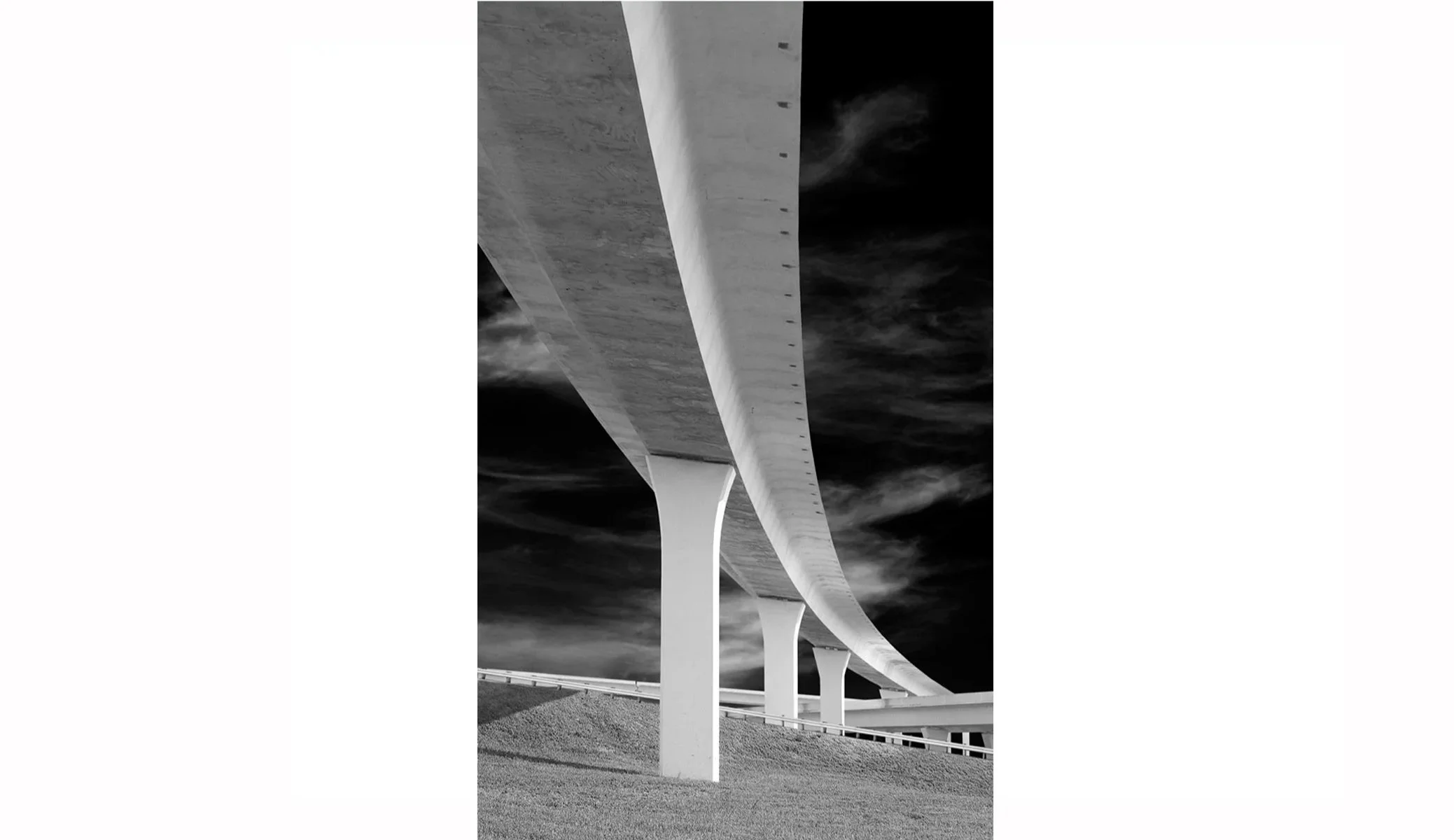
I 75 102906_043
In I-75, the front-facing view of a highway overpass becomes a portrait of infrastructure as if it were a model. The black-and-white rendering emphasizes the clean columns and sweeping curve of the bridge overhead. Like Avedon’s Suzy Parker, it carries grace and stature, but without discrimination—the bridge stands with the same integrity whether beneath it passes a motorcycle, a junk car, or a Rolls Royce. In its framing, the photograph elevates concrete into elegance, showing how form can carry presence beyond its function.
Giovanni Battista Piranesi
4 October 1720 – 9 November 1778
-

"The Drawbridge" (also known as Carceri VII), 1749-1750
Piranesi’s Carceri etchings create vast, impossible spaces through a dense web of engraved lines. His imaginary prisons are defined by shifting perspectives, layered structures, and the restless energy of marks that both build and destabilize space. They are as much about perception as they are about architecture.
-

Abstract Red_07-06-2014_5-07PM
In Abstract Red, I channel this spirit of construction through the photographic process. Motion becomes my etching tool: horizontal and vertical movements overlap, generating a lattice of luminous lines. These shifting traces open and close space simultaneously, creating architectures of perception that change depending on where the viewer’s eye rests. If Piranesi carved imaginary worlds with scratches of ink, I translate that impulse into light and movement—structures that are real only in the act of seeing.
Pablo Picasso
25 October 1881 – 8 April 1973
-

Woman Ironing, 1904
Picasso’s Woman Ironing embodies the tension between fragility and endurance, form and dissolution. Through elongated geometry and muted tonalities, the work conveys both the weight of labor and the transcendence of line and structure. It transforms hardship into an almost architectural presence.
-

1111 LR_030812_044
In Concrete Perspective, I found in Picasso a vocabulary for translating my own state of being at the time—anticipation, uncertainty, and the search for strength within constraint. Photographing the upward shaft of a stairwell, the image abstracts space into geometry and color, echoing Picasso’s way of structuring emotion through form. The muted palette and angular composition transform an everyday structure into a vessel of introspection, a place where architecture itself reveals its inner labor.
Gerhard Richter
9 February 1932-
-
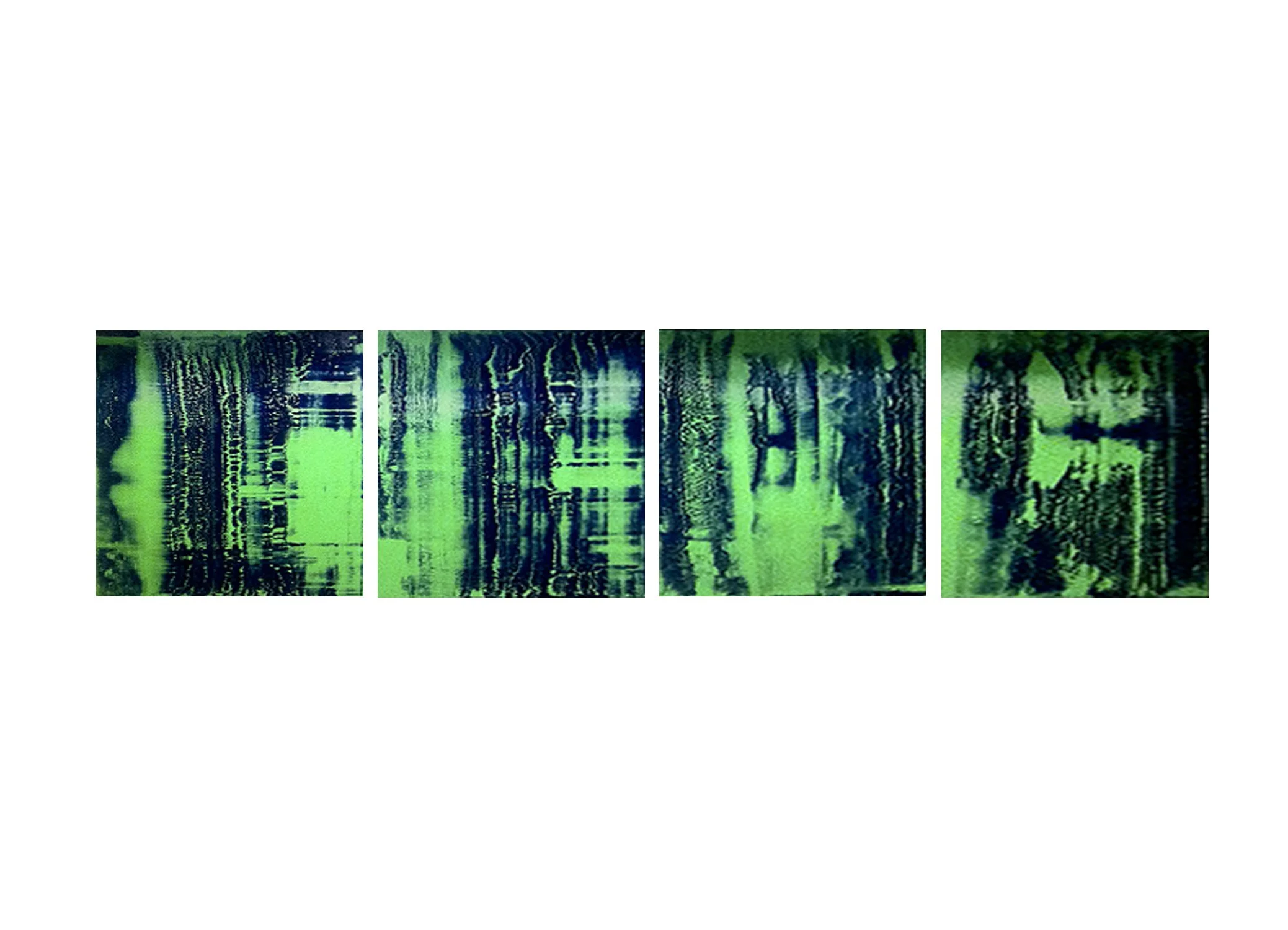
793-1 -793-4 Green/Blue (Grün/Blau)
Richter’s Green/Blue sequence foregrounds the subtle interplay between repetition and variation: four canvases that speak the same visual language yet resist sameness. He pushes painting toward the photographic—seriality, mechanical precision, the sense of images produced one after another—while allowing small differences to carry profound weight.
-

Teal After Dinner 11-01-2014 11-54-09pm 11-54-07pm 11-54-12pm 11-54-14pm
In After Dinner, I documented four consecutive instants, one after the other, allowing photography to mirror Richter’s painterly logic. The sequence preserves a shared language of time, light, and framing, while the micro-variations between frames mark the irreducible difference of each moment. Both works demonstrate how repetition generates not redundancy but resonance, creating space for reflection on what shifts, what persists, and what lingers in perception.
Giorgio de Chirico
10 July 1888 – 20 November 1978
-

"The Anguish of Departure" (original title: L'Angoisse du départ), 1914
De Chirico’s painting builds an uncanny atmosphere through architecture, perspective, and color: monumental forms, impossible scale, and skies rendered not as background but as emotional force. His palette does not document but deliberately evokes, shaping perception through suggestion.
-

MIA cyan_ 010411_ 0048
My photograph of the empty rooftops at Miami International Airport works in a similar register. Machinery, concrete, and sky coexist in a way that resists scale and function. By framing these structures against infinite skies, the photograph becomes a surreal architecture—one that is both factual and strange, a site where perception opens to ambiguity. The surrealists sought to destabilize the everyday through precision; here, the stark clarity of light and concrete achieves that same unsettling effect.
Edward Hopper
July 22, 1882 – May 15, 1967
-

Nighthawks 1942
Edward Hopper’s Nighthawks depicts four figures in a brightly lit downtown diner at night, viewed from the outside through a large glass window. Its themes of isolation, loneliness, and the anxiety of urban life in the 1940s are reinforced by the stark contrast between the diner’s glow and the surrounding darkness. With its cinematic angles and careful composition, the painting underscores separation — figures together yet disconnected, framed by architecture that both reveals and confines.
-
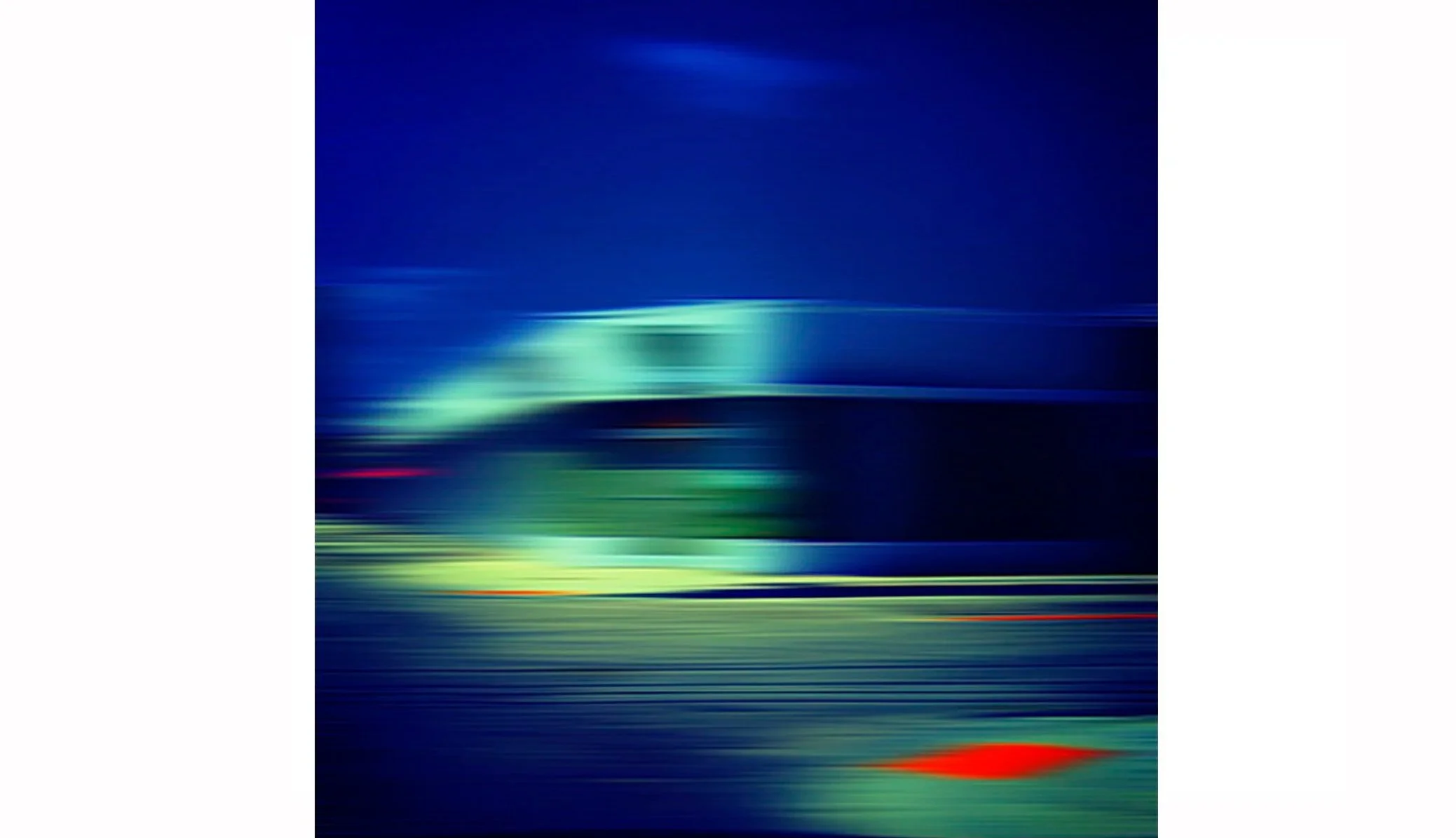
WYNWOOD CORNER À LA HOPPER 07.19.2014_3:56:27 PM
In Wynwood Corner, I photographed a seemingly ordinary Miami street, caught between redevelopment and abandonment. The sharp geometry of concrete walls, washed in daylight, echoes Hopper’s fascination with emptiness as much as with presence. Like Nighthawks, this work transforms urban space into a psychological landscape, where the familiar becomes strange, and where absence is as palpable as form.
Edward Ruscha
15 January 1955 -
-

"Americana" 1965 Series, Twenty-Six Gasoline Stations
Ruscha’s seminal photo-book of gasoline stations along Route 66 redefined photography’s relationship to seriality, banality, and the American landscape. By treating commercial architecture with the same rigor as fine art, he elevated the deadpan record into a conceptual act — art as both catalog and commentary on everyday life.
-

RETRO MIAMI AFTER CAR PASSES 10.05.2014_6:02:00 PM
Driving Miami’s arteries — I-95, 595, and the city’s web of overpasses — I began accumulating images of warehouses, lots, and structures that framed daily life. My background in commercial photography, where catalogs and repetition shaped visual language, directly informed this approach. In Retro Miami After Car Passes, from Traces of Perception, the ordinary becomes subject: the pause after movement, the imprint of passage, the structure waiting to be seen anew.
Andreas Gursky
15 January 1955 -
-

Rhein II, 1999
Gursky’s Rhein II is a monumental image that refines reality into near-abstraction. With its clean horizon lines, muted palette, and vast sense of order, the photograph elevates a river landscape into a meditation on perception itself. Its record-breaking auction sale in 2011 underscored how minimalist photography could achieve not only critical recognition but also cultural impact.
-

FTL DEPARTURES CLOUDY DAY 04.02.2013_11-46-06 AM
In FTL Departures Cloudy Day, taken from my Traces of Perception series, I was working with the motion blur of my iPhone while dropping someone at the Fort Lauderdale airport. The cloudy light, the horizontal divisions of sky, tarmac, and architecture — all softened by the atmosphere — evoked in me the same quiet intensity I felt when first encountering Gursky’s Rhein II. What began as an experiment with blurred perception became a reproducible technique: refining chance into intention.
Henri de Toulouse-Lautrec
24 November 1864 – 9 September 1901
-
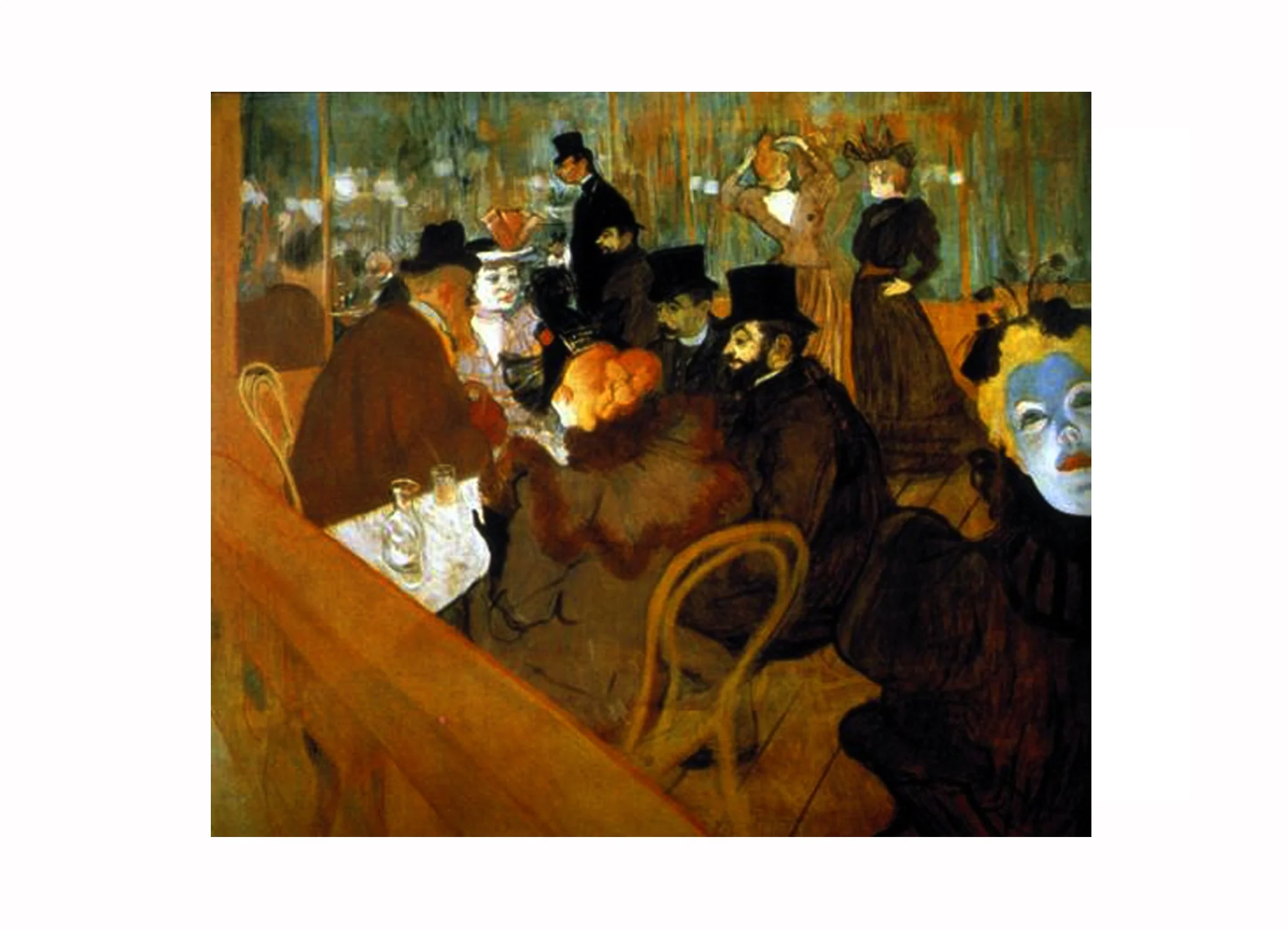
"At the Moulin Rouge", 1892-1895
Toulouse-Lautrec’s At the Moulin Rouge captures the fleeting immediacy of nightlife in late 19th-century Paris — its lights, shadows, and transient characters. Through color, atmosphere, and vantage point, the painting conveys both intimacy and distance: the desire to belong within the scene and the awareness of being apart from it.
-
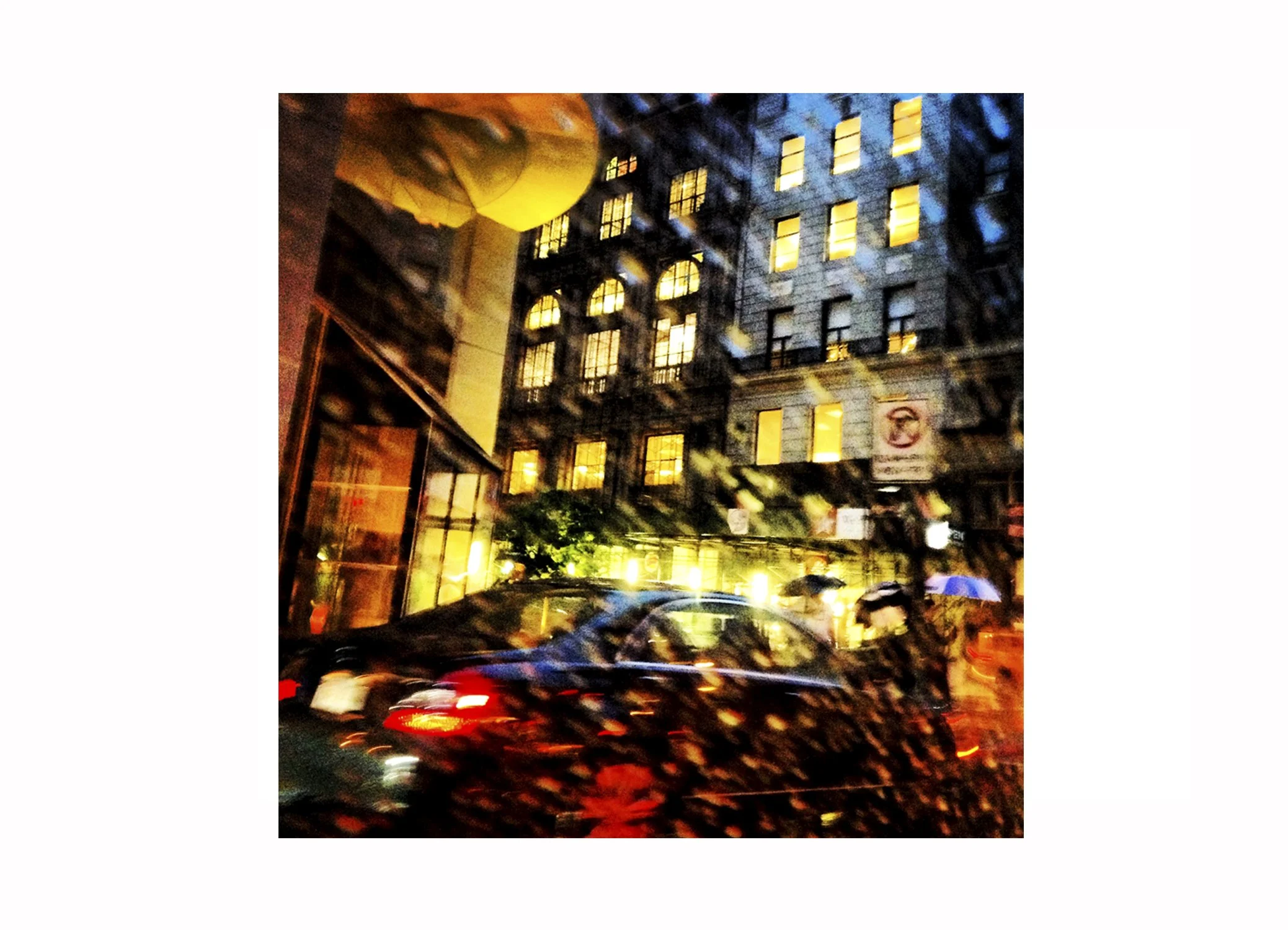
Manhattan Rain 01_NYC_061013_0468
In Manhattan Rain 01, photographed from the backseat of a yellow taxi at night, rain blurs the window while the street’s umbrellas, warm apartment lights, and neon tones dissolve into luminous fragments. The work reflects a transitional moment in my practice — from commercial precision to a freer, fine art sensibility shaped by the immediacy of mobile technology and the visual language of social media.
Kazimir Malevich
23 February, 1879 – 15 May 1935
-

"Suprematist Compositions,"
Malevich’s Suprematist abstractions reduced painting to its purest elements — geometry, color, and the tension of forms suspended in space. In doing so, he opened a radical new vision of art as a spiritual and intellectual structure, one that transcended representation. His works, often austere yet deeply resonant, are less about objects than about the architecture of thought itself.
-

UF_021912_079
In Concrete Perspective, I engage architecture as a language of geometry. UF_021912_079 distills the weight and rhythm of concrete structures into a composition where planes intersect and volumes compress. The photograph aligns with Malevich’s pursuit of clarity in form, while translating Suprematist ideals into the contemporary material environment.
Mark Rothko
September 25, 1903 – February 25, 1970
-
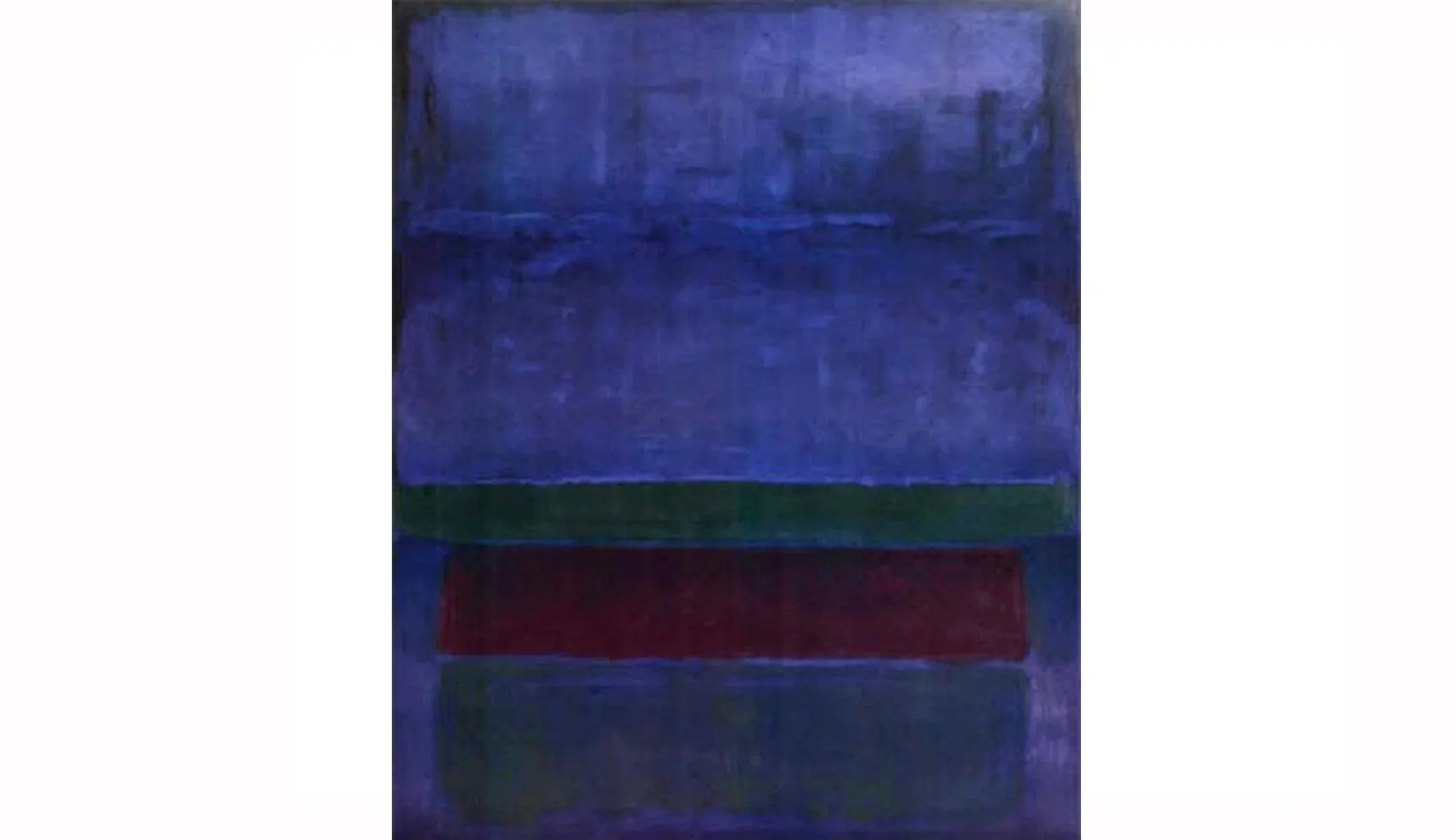
Blue, Green, and Brown, 1952
Rothko’s painting distills color into atmosphere, emotion, and transcendence. His planes of blue, green, and brown hover and breathe against one another, inviting not interpretation but immersion. Rothko was less concerned with form than with the felt weight of color — its ability to open inner states of silence, awe, or melancholy.
-

FLL DEPARTURES PURPLE ARI 06.03.2014_6:03:20 AM
This photograph, part of my Traces of Perception series, was taken almost unconsciously — a fleeting moment captured while driving to the airport. Here, color takes on a presence beyond the literal: a field of purple light, transient yet deeply resonant, becomes a carrier of emotion. It is less about the scene itself than about perception fractured by speed, filtered by memory, and translated into color.
René Magritte
November 1898 – 15 August 1967
-

The False Mirror, 1928
Magritte’s painting challenges the relationship between what we see and how we perceive it. The Surrealists were fascinated with the mysterious and irrational aspects of the mind, and here, the human eye becomes a window to the sky — a reflection that is not a reflection, but an illusion shaped by the mind. His technique, polished and precise, renders the eye and the sky with photographic clarity, heightening the strangeness. This "magical realism" makes the impossible appear real, inviting the viewer to question their own perception.
-

Empty Parking Lot, Miami
In my photographs of Miami’s empty parking structures, I am similarly drawn to precision and clarity: stark geometries of concrete against an infinite sky, rendered in a way that is exact yet uncanny. The vastness of space, punctuated only by minimal functional marks (a fire exit, a painted edge, a sharp corner), takes on a surreal charge. By shifting the frame against the horizon line, orientation itself becomes unsettled — the eye wavers between grounded reality and disorienting expanse. Through this clarity, the work transforms factual structures into spaces where perception slips, echoing Magritte’s invitation to question what we believe we see.
Edward Weston
March 24, 1886 – January 1, 1958
-

Pepper No. 30 (1930)
Weston showed me how the simplest subject could embody the weight of art. His Pepper clarified what I sought in photography: form, texture, and presence distilled into something more.
-

Three Pears
While transitioning from analog to digital — and from commercial assignments toward defining art through photography — I created this triptych as my first attempt at “fine art.” The nearly dissolving pears, arranged on a rain-soaked sheath in open shade, carried the texture of impermanence and the quiet weight of sculpture. Since then, my practice has continued to pursue abstraction in conversation with painting, sculpture, architecture, photography, and music.
